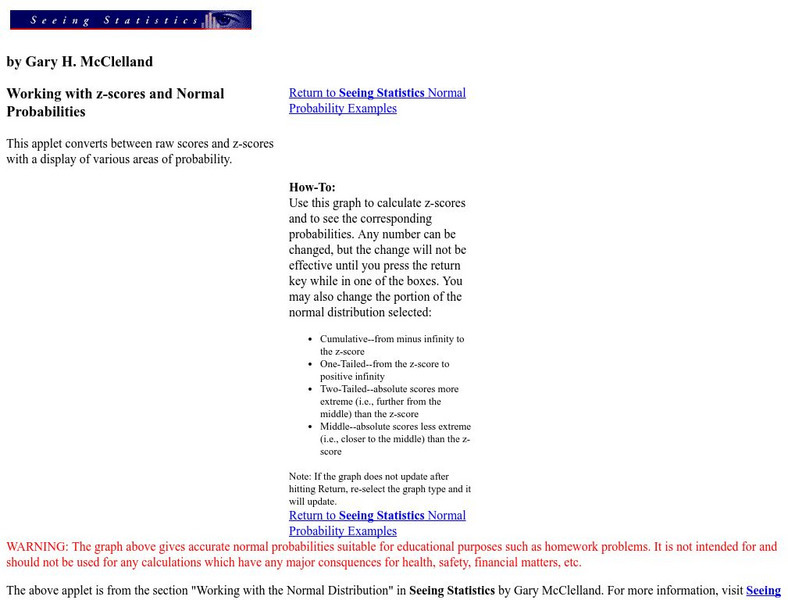Curated OER
Z-Scores
Students solve problems by identifying the percent of area under the curve. In this statistics lesson, students discuss z-scores as they calculate the different percentages under the bell curve. They calculate the standard deviation.
University of Colorado
University of Colorado: Z Scores Applet
The Applet assists the user in questions which specify a probability and ask for the relevant range of raw scores or z scores. The program will also transform from raw to z scores and back again, if needed.
Other
Fayetteville State University: Z Distributions
The introductory paragraph explains Z-Distributions, their spread, and the ability to find certain values within the distribution. Two animated graphs are then provided as an example of the probability of the normal distribution curve.
Texas Instruments
Texas Instruments: Numb3 Rs: Choosing Contenders
Based off of the hit television show NUMB3RS, this lesson shows students two different ways to "normalize" scores: by applying a created scalar factor so that all scores have a mean of one, or by using z-scores. Students are walked...
CK-12 Foundation
Ck 12: Algebra Ii: 6.4 Critical Values
This section is an introduction to critical values and critical regions. Critical values are directly related to Z-scores, which are covered in more detail in other lessons. References to left and right-tailed tests are also mentioned.
Other
Fayetteville State University: Z Scores and Probability
Several paragraphs of explanation and graphs are found here to get across the concept of normal scores, z-scores, and the related probability in a simple fashion. This page is part of a collection from the university on basic statistical...
Other
Westgard Qc: Hypothesis Testing
A good description of hypothesis testing. Refers to the null hypothesis as a "straw man" that is either left standing or knocked down. Other links are provided to related parts of the topic.







